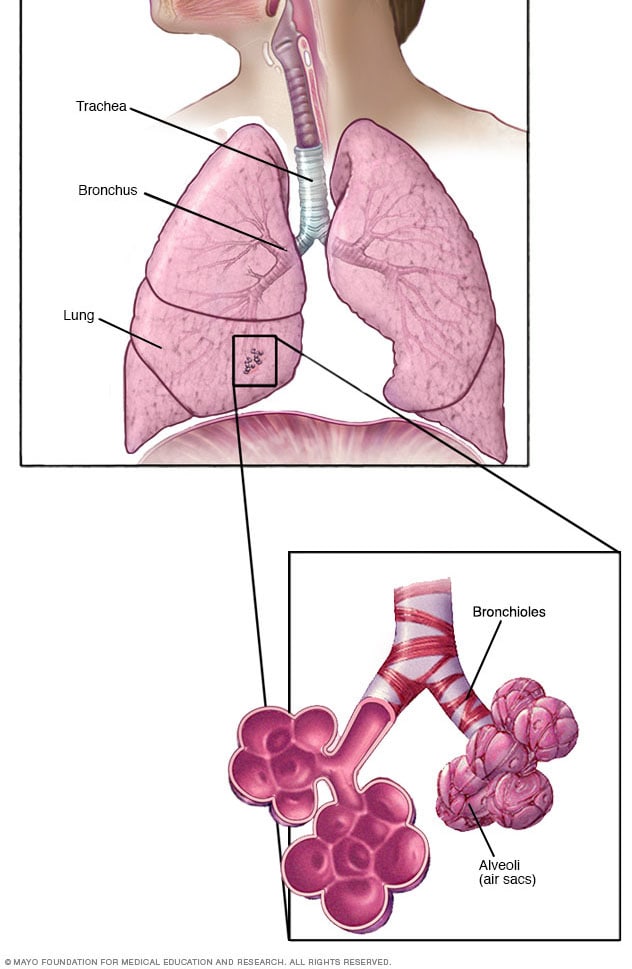What do the lungs do? (7 facts)
1. Functions – the lungs are the organs responsible for breathing, helping to transfer oxygen from the air we inhale into the bloodstream and removing carbon dioxide from the body.
The lung is also a metabolic organ. It is involved in the synthesis, and degradation of a variety of substances, including pulmonary surfactant, fibrin, and a range of hormones (i.e., histamine, angiotensin-converting enzyme (ACE) and prostaglandins).
For example, the lungs also play a role in regulating blood pressure (and acid-base balance) in the body through the production of ACE.
2. Anatomy – the human lungs are located in the chest cavity, protected by the ribcage, and are divided into two lobes on the left side and three lobes on the right side.
 Lung anatomy
Lung anatomy
The lungs are surrounded by a thin layer of tissue called the (visceral) pleura, which helps to protect and cushion them as they move during breathing. There is another layer of (parietal) pleura on the inside of the chest wall.

The lungs are able to self-cleanse by producing mucus, which traps dirt, bacteria, and other particles. Tiny hairs called cilia then move the mucus up to the throat, where it can be coughed or swallowed.
3. Surface area – of the lungs is 70 square metres, which is roughly equivalent to half a badminton court.
4. Microscopically – the lungs contain tiny air sacs called alveoli, where oxygen and carbon dioxide are exchanged between the lungs and the bloodstream. An adult lung contains about 600 million alveoli.
 Alveoli
Alveoli
5. Capacity – lungs hold up to 5 litres of air, but the actual amount of air we inhale and exhale during normal breathing is much less (0.5 litres with each breath). Even if you exhale really hard, a residual volume of 1-1.2 litres of air remains in your lungs.
The normal respiratory rate (number of breaths you take) is 15 (12-20) breaths per minute. An average person breathes in and out around 20,000 litres of air every day.
6. Respiratory disease – smoking and exposure to air pollution damage the lungs and increase the risk of respiratory diseases such as asthma, COPD, and lung cancer.
7. Control – the respiratory system is controlled by the brainstem, which regulates the rate and depth of breathing based on the body’s oxygen and carbon dioxide levels.
Summary
We have described what the lungs do (7 facts). We hope you understand it better now.

